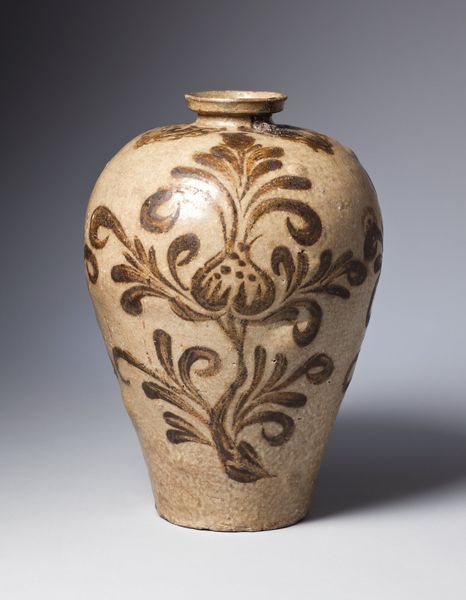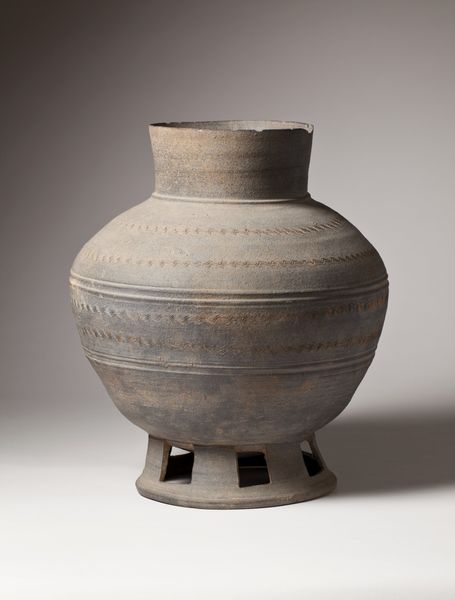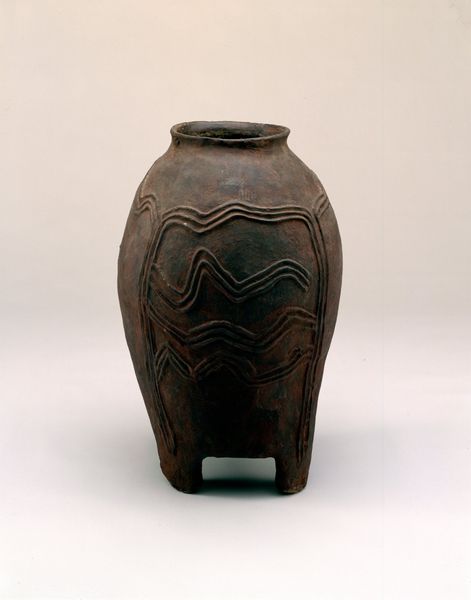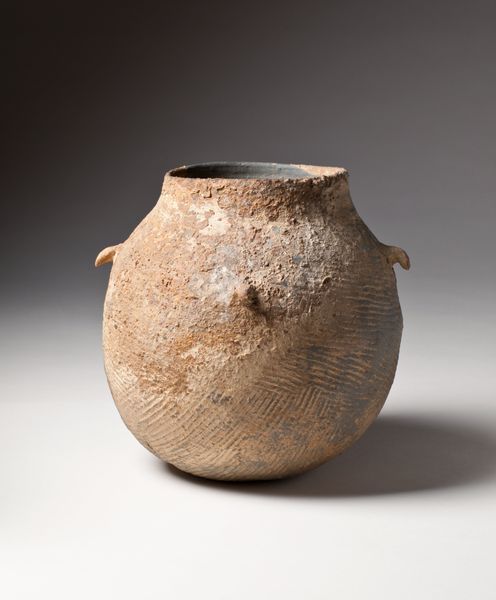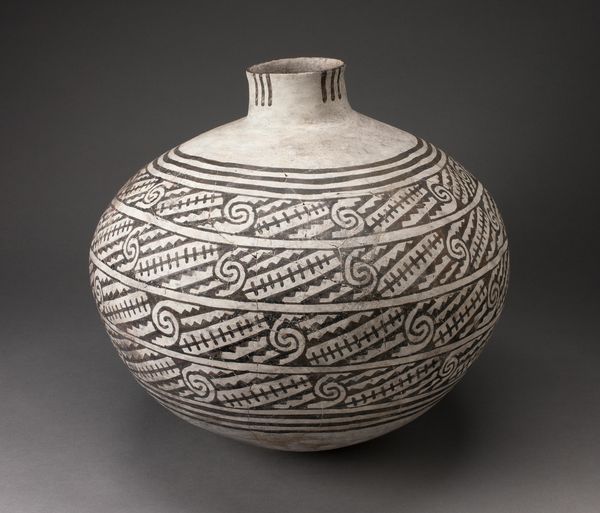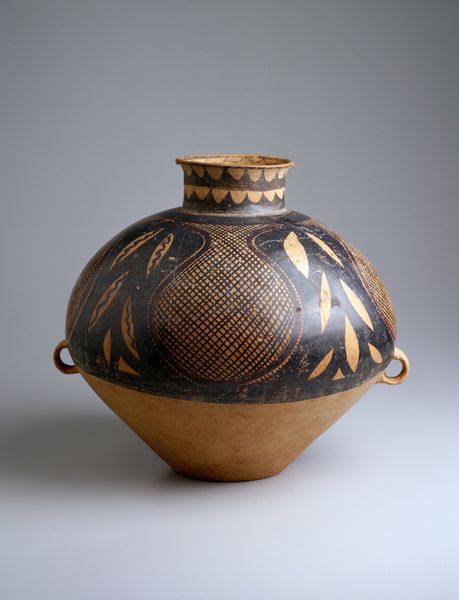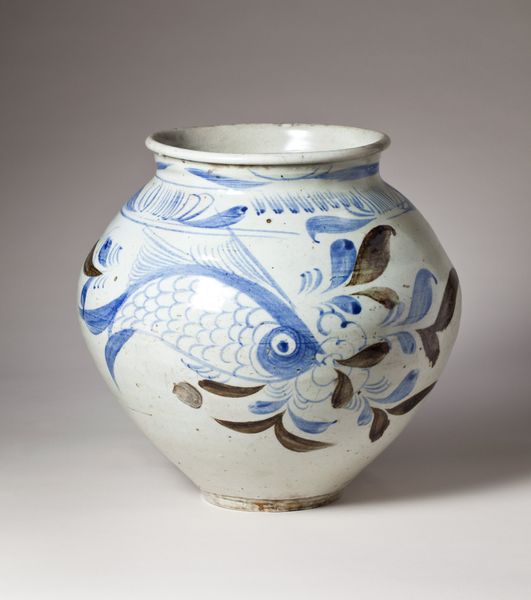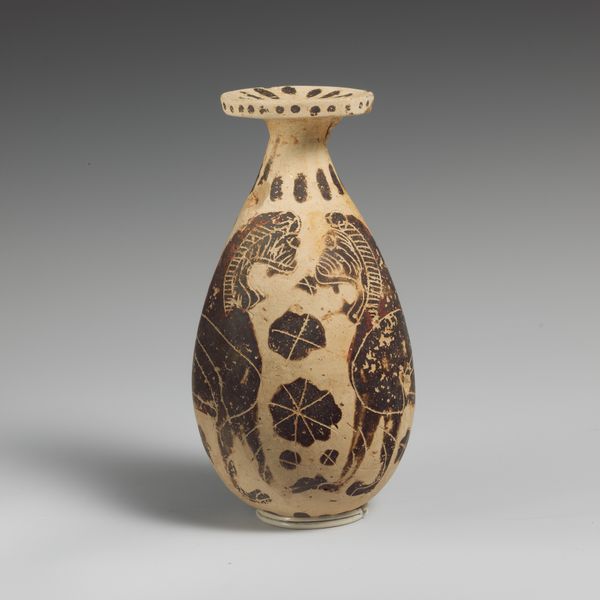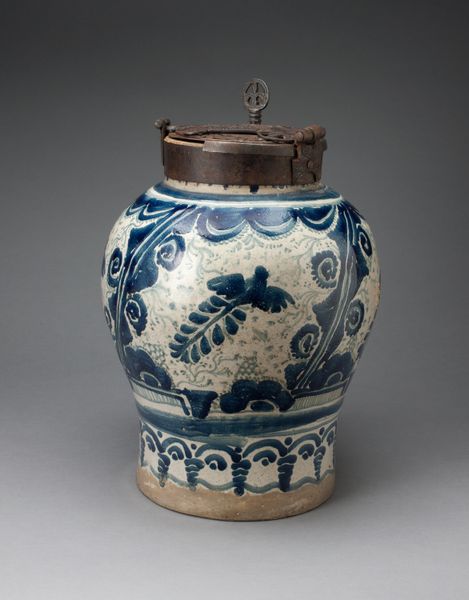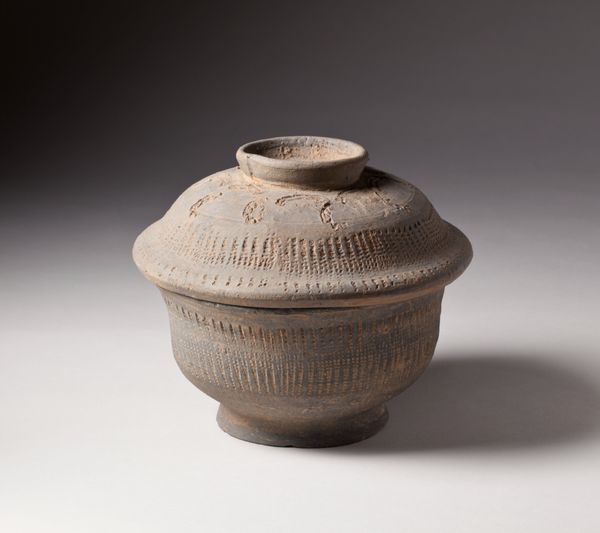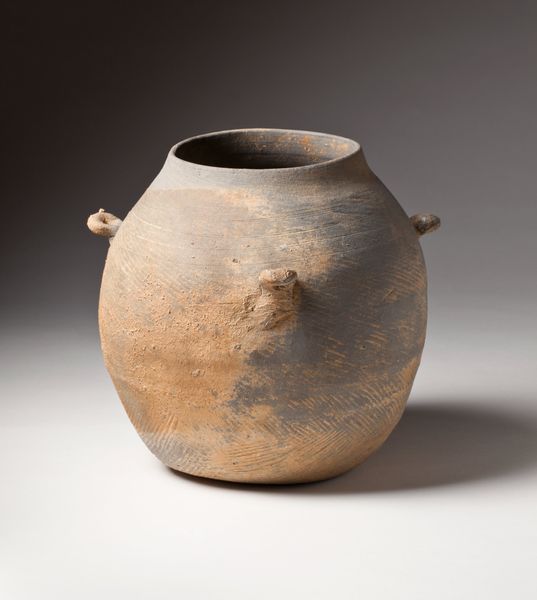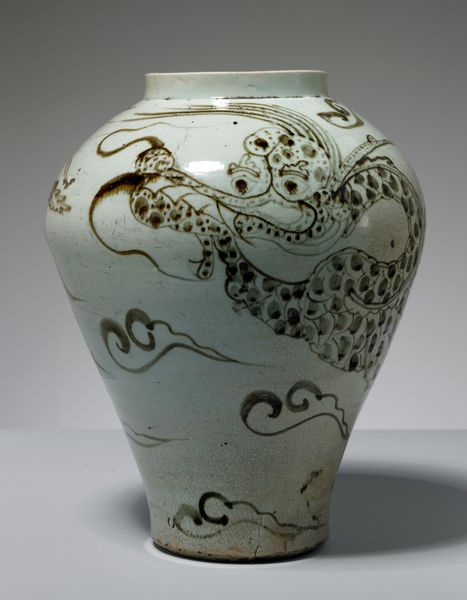
ceramic
#
medieval
#
asian-art
#
ceramic
#
form
#
vessel
#
ceramic
#
decorative-art
Dimensions: 10 3/8 × 6 1/2 × 6 1/2 in. (26.35 × 16.51 × 16.51 cm)
Copyright: Public Domain
Editor: Here we have an anonymous Korean ceramic vessel titled "Maebyeong with chrysanthemums," dating from the 11th to 12th century. I’m immediately drawn to its understated elegance, the way the neutral color palette highlights the graceful form and detailed floral patterns. What do you see in this piece? Curator: Beyond its obvious beauty, I see layers of cultural memory embedded within this Maebyeong. Chrysanthemums, in East Asian art, represent longevity, resilience, and autumn. Their presence here speaks volumes. What emotions or ideas do these symbols evoke for you? Editor: I suppose I think of aging gracefully, enduring hardship, and appreciating the beauty of the present moment, like enjoying the last blooms of the year. The repeating patterns remind me of decorative arts. Is there something specific about this decorative aspect? Curator: Exactly! The careful placement and repetition of the chrysanthemum motifs aren't merely decorative. It’s a reinforcement of the symbolism. Remember, these vessels weren’t simply utilitarian; they carried social and ritual weight, representing harmony and balance within the household and the world. The meticulous details, what do they suggest to you in terms of production and intention? Editor: The artist seems dedicated and trying to create a valuable object. Someone, I guess, felt it was important to beautify something they also needed, merging functional purpose with artistic intention. It's really quite lovely and different from European art. Curator: Precisely. This merging of art and life is crucial in understanding the values of the period. Seeing such intricate details reflecting core values allows a deeper, maybe empathetic appreciation for a different worldview, don't you agree? Editor: Absolutely. Thinking about the layers of meaning really transforms how I see this piece. It's not just a pretty vase anymore. Curator: And for me, understanding its history reminds me of the enduring human need to imbue everyday objects with meaning and beauty. It’s a reminder of the connections between us across time and culture.
Comments
minneapolisinstituteofart almost 2 years ago
⋮
Korean potters adopted various scrolling floral designs from imported Chinese ceramics, but the origins of such patterns can be traced to Central Asia, India, Persia, and as far away as Greece and Egypt. Goryeo celadons with scrolling patterns in iron oxide, such as this one, are prized for the exuberant, painterly quality of their brushwork.
Join the conversation
Join millions of artists and users on Artera today and experience the ultimate creative platform.
